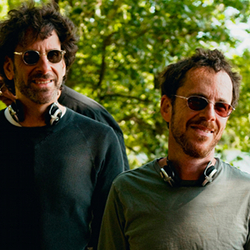
Review: All Is Lost (2013)

Cast: Robert Redford
Director: J.C. Chandor
Country: USA
Genre: Action | Drama
Official Trailer: Here
Editor’s Notes: All Is Lost opens tomorrow in limited release. For an additional perspective, please read Zoe’s review (81/100).
Though Robert Redford appears to be giving it his all, J.C. Chandor’s All is Lost (2013) is a feeble attempt at depicting an inspirational survival story. With its single, complacent character—an old, feeble man with no name—All is Lost does little to express a sense of urgency or emergency throughout the film. Though it is a survival story, and the Man is shown to act in certain ways to survive—rationing his water, patching up his boat, eating Asian noodles—there is really not much conflict. The events are quite mundane, and the Man looks more like he’s enjoying a vacation than surviving at sea. It’s not until the near end of the film that Redford and the Man’s desperation become impassioned, but this is too little too late.
The plot of All is Lost is essentially the same as Cast Away (2000), except there is no island, no Wilson, and no real adventure.
The plot of All is Lost is essentially the same as Cast Away (2000), except there is no island, no Wilson, and no real adventure. After a collision, an elderly man must survive at sea long enough to be rescued. On a houseboat named the Virginia Jean—presumably after his late wife—the man does what he can to endure his life. In almost perfect silence, his actions are shown. There is no need for dialogue, as the viewer is supposed to be engaged in the Man’s survival techniques. Unfortunately, while the survival tricks and events experienced by the Man are supposed to be exciting and give a sense of survivability, they come off as ostentatious and desperate pleas for the viewer’s interest. Trying far too hard to make it seem like a crisis, the film never actually rises to crisis-mode; it is laughably dull and ordinary. There is never the portrayal of a real existential crisis, and besides the Man crying out an F-Bomb once throughout the entire film, there is no real anger or tension or despair.

The man’s complacency is shown in his routine actions. The first half of the film is shot like a montage, but instead of generating affect, the montage simply serves to catalogue the Man’s survival tricks. Most of these tricks seem quite out of place, or lack the emotional tenor that Chandor seems to be going for. Missing the nail completely, Chandor’s illustration of the Man eating, looking at his compass, shaving regularly, and walking about his huge houseboat seems rather ordinary. Throughout the montage sequences, Chandor gives the sense that he and the writers simply brainstormed fifty things one could do while surviving out at sea.
Most eventful of this first half is when the Virginia Jean sinks. At this point, the Man has jumped about two feet—using just about all his strength and energy—to fall into an enormous life raft. He sorrowfully watches behind an enclosure as the Virginia Jean slowly sinks below the waterline. This moment, while supposed to elicit the viewer’s compassion, fails in that the viewer doesn’t know anything about the Man’s past. Who is Virginia Jean? What does she—or the boat itself—mean to the Man? Why is he so sentimental about this boat when the real calamity is that he is now stuck on a life raft? These questions prevent the viewer from really caring about the Man or his ordeal. This lack of emotional resonance simply causes the film to seem pretentious rather than sincere.
Throughout the montage sequences, Chandor gives the sense that he and the writers simply brainstormed fifty things one could do while surviving out at sea.
In addition to the ordinary events of survival, the situation itself doesn’t quite call for urgency. First of all, the man is quite elderly and looks as though he could pass at any moment. This is not to say that he doesn’t deserve to survive, but that being lost at sea almost seems like his chosen home. We have never seen him in any other situation, and it seems that he has no real life to be leaving behind. What is he fighting to survive for, other than himself? Secondly, the Virginia Jean is a huge houseboat, and, after the Man patches it up, it seems that it could easily carry a dozen men to safety. Finally, the life raft that the Man uses is so gigantic it might as well be called a ship. It moreover has several safety features and is essentially built for this situation. In addition to all this, the weather is almost perfect, and the water is typically quite still. There is little to cause him harm, and when there is, he survives without much difficulty. In fact, during the one major storm, he knocks himself out and wakes up to a pleasant morning. He may have cut himself, but he managed to survive the storm while passed out in his kitchen.
Once on the life raft, the Man’s need to survive becomes more apparent. On two separate occasions he attempts to flag down a nearby ship. In both instances, he goes unseen, despite the ships coming ridiculously close to where he is. Literally five feet away from the ships’ passage, the Man resigns his hope to be picked up. Besides this, the Man loses a match—how dreadful—his fish gets eaten by a larger fish, and his remaining water becomes contaminated due to a hole in his canteen. Of course, the man is able to somehow use the sun’s heat to render the water drinkable, and the sense of urgency found in his lack of water is overcome without hesitation.
When the life raft can no longer hold him, and the Man plunges into the sea, there are some incredibly sensational underwater shots. Perhaps the film’s only amiable quality, the beautiful lethargy of the underwater ocean expresses a poetic sense of infiniteness. When the man goes into the water, it seems that he has finally let himself go, and his body is released into the infinite. The moment he shows that he has given up—that ‘all is lost’—is a truly emotional one, as the viewer believes there is no longer any hope for him. As the raft burns at sea, the man sinks deeper into the ocean, and the boat he attempted to flag down sails away, all is truly lost. However—without spoiling the ending—the final moments of the film completely reverse this.
In the end, moments of solemnity and psychological insight are only covered—lightly—in the final act, the lack of background and name of the character is interesting, but prevents one from really caring about him, and the man’s ultimate fate is highly questionable, deflating the narrative choices and themes held throughout the film. All is not lost, but this film should be lost and never found.
Related Posts
Kamran Ahmed
Latest posts by Kamran Ahmed (see all)
- Review: American Hustle (2013) - December 22, 2013
- TIFF’s Spirited Away: The Films of Studio Ghibli Review: My Neighbor Totoro (1988) - NP Approved - December 15, 2013
- TIFF’s Spirited Away: The Films of Studio Ghibli Review: Castle in the Sky (1986) - December 13, 2013



























